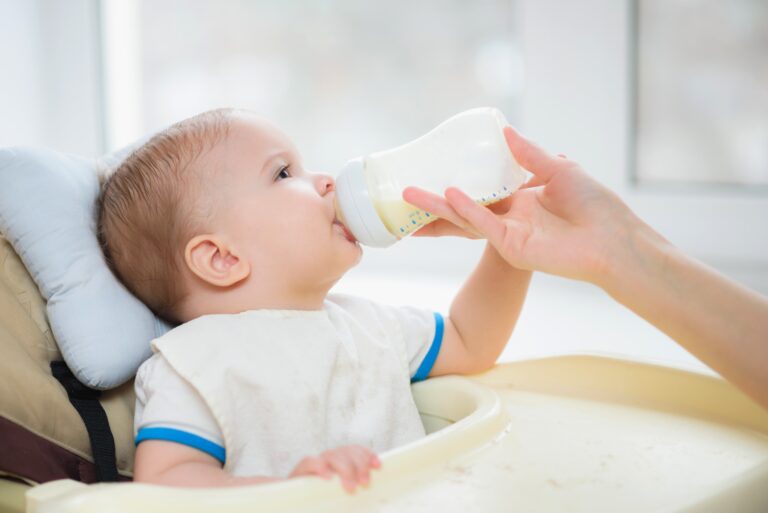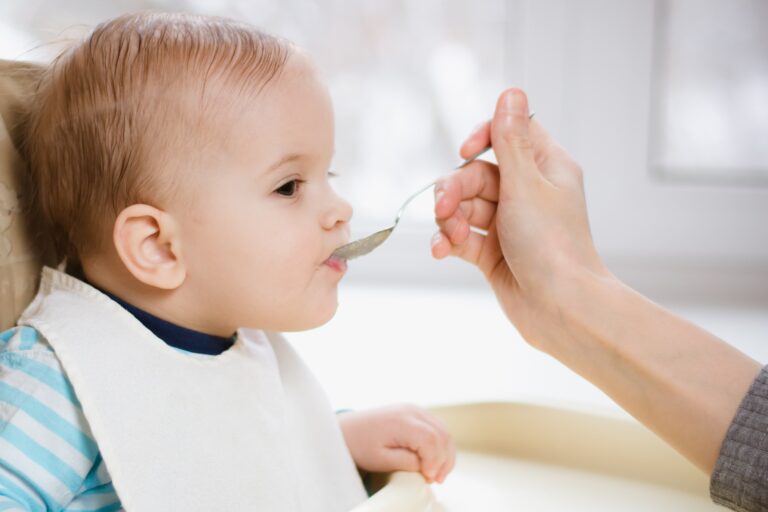How Do I Know If My Baby is Feeding Enough: Signs to Watch
Your baby is feeding enough if they gain weight steadily and have frequent wet diapers. Signs of sufficient feeding include a content demeanor and full cheeks during suckling.
Determining if your baby is feeding enough is a common concern for new parents. It’s crucial to ensure your little one is receiving the right amount of nutrition for healthy growth and development. Babies who feed well exhibit specific behaviors and physical cues that can reassure you of their well-being.
Monitoring your baby’s weight gain, the number of wet diapers, and the general contentment post-feeding are reliable indicators. A well-fed baby typically looks satisfied, falls off the breast or bottle by themselves, and has moist mouth after feeding. Understanding these signs helps you feel confident that your baby’s nutritional needs are being met.
Early Indicators Of Adequate Feeding
Regular suck and swallow patterns are key signs of good feeding. Listen for swallowing sounds to ensure your baby is ingesting milk.
Watch your baby’s face as they feed. Cheeks should stay rounded, not sunken. This shows a strong suckling action.
Understanding Baby’s Weight Gain
Babies grow quickly after birth. Weight gain is a sign of good health. Newborns lose up to 10% of their weight initially.
Aiming for a weight gain of 5-7 ounces a week. That’s about 1/2 to 1 ounce daily. By 4-6 months, they should double their birth weight.
| Age | Expectations |
|---|---|
| 1 Week | Back to birth weight |
| 1-4 Weeks | Around 2 ounces/week gain |
| 1-6 Months | 1 ounce/day gain |
Parental concerns should rise if baby’s weight dips or stalls. Little or no weight gain over two weeks is a red flag. Contact a healthcare provider for advice.
Evaluating Diaper Output
Evaluating Diaper Output is key for knowing your baby’s feeding success. Babies typically have 6-8 wet diapers daily by the end of the first week.
| Age | Wet Diapers |
|---|---|
| Day 1 | 1-2 |
| Day 2 | 2-3 |
| Days 3-5 | 3-5 |
| After Day 6 | 6-8 |
Poop color and texture also tell a lot. Newborn poop is sticky and green-black. This poop is called meconium.
After day 4, it should be yellow, soft, and seedy. These changes show your baby’s digestive system is working.
Behavioral Signs Of Sufficient Feeding
Recognizing if your baby is feeding enough can be simple. Watch for satiety cues. These are like little signals. A calm and content baby after feeding often means enough milk. Do they stop nursing on their own? That’s a good sign too.
Babies show less fussiness when full. They may also sleep well after eating. Too much crying can mean hunger. But with enough feeds, crying lessens. Look for a relaxed body and open hands. These suggest your baby is satisfied. Remember, each child is different. It’s key to notice these small changes.
Feeding Frequency And Duration
A Typical Feeding Schedule varies, but newborns often eat every 2 to 3 hours. Over time, this may become less frequent. Track the number of wet diapers; typically six or more in 24 hours can indicate adequate intake. Feedings can range from 10 to 30 minutes per breast.
Recognize the Importance of On-Demand Feeding. Babies fussing or sucking fingers may signal hunger. Offer the breast or bottle—they know when they’ve had enough. This method supports their natural appetite regulation. Adjusting to your baby’s cues is key. Crying or jerking movements often are late signs of hunger.
Physical Responses To Feeding
Physical responses to feeding show if a baby is eating well. Look at the muscle tone and movement.
Babies with good muscle tone grip firmly. They move their arms and legs softly. This is a positive sign.
After meals, notice your baby’s mouth movement. A relaxed mouth and jaw suggest enough food.
| Mouth looks moist | Yes |
| Happy and calm | Yes |
The Role Of Pediatric Check-ups
Regular pediatric check-ups are crucial for your baby’s health. Growth charts and percentiles provide vital information. They help track your little one’s development.
Your doctor will compare your baby’s growth to these charts. This comparison shows if your baby grows as expected. It reassures the baby is feeding enough.
If concerns about feeding arise, your doctor will guide you. They might suggest additional tests or dietary changes. They ensure your baby stays on the right track for healthy growth.
Frequently Asked Questions For How Do I Know If My Baby Is Feeding Enough
How Do I Know If My Baby Isn’t Feeding Enough?
Signs your baby may not be feeding enough include frequent fussiness, sleeping excessively, and producing fewer wet diapers.
How Do You Know If Your Baby Is Underfed?
Signs of an underfed baby include excessive sleepiness, irritability post-feedings, less frequent wet diapers, and weak sucking during feeding.
How Do I Make Sure My Baby Gets Full Feeds?
Ensure your baby has a good latch, offer both breasts, watch for swallowing, feed on demand, and monitor diaper output and weight gain.
Conclusion
Understanding your baby’s feeding needs is vital to ensure their healthy growth and development. By tracking wet diapers, monitoring weight gain, and watching for contentment after meals, you’re taking the right steps. Consult with healthcare providers for personalized advice. Remember, each infant has unique needs – trust your instincts and your baby’s cues.





